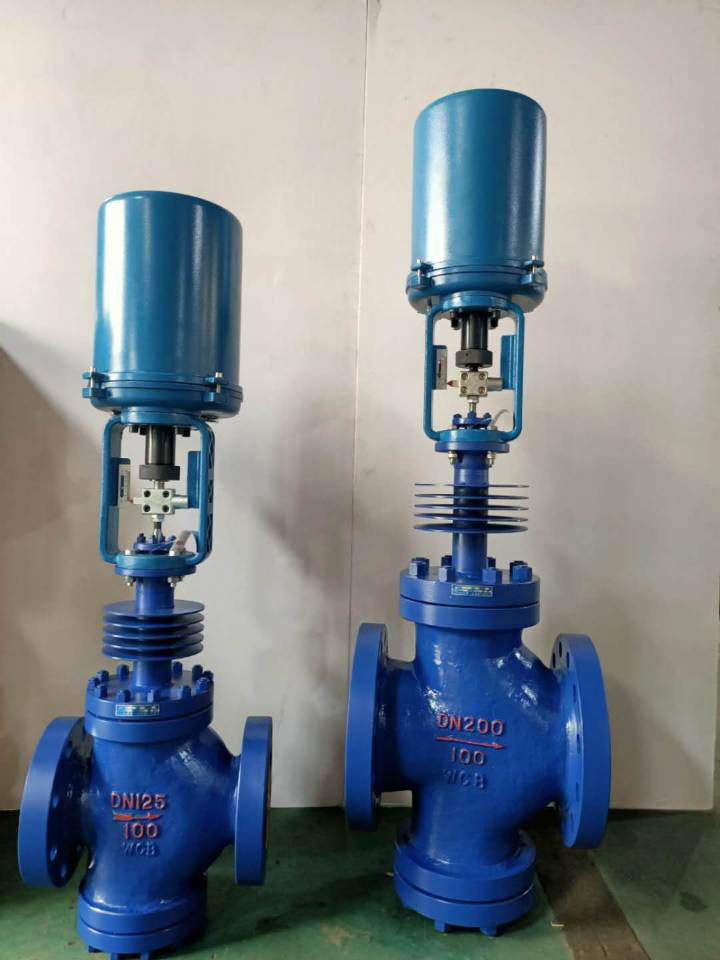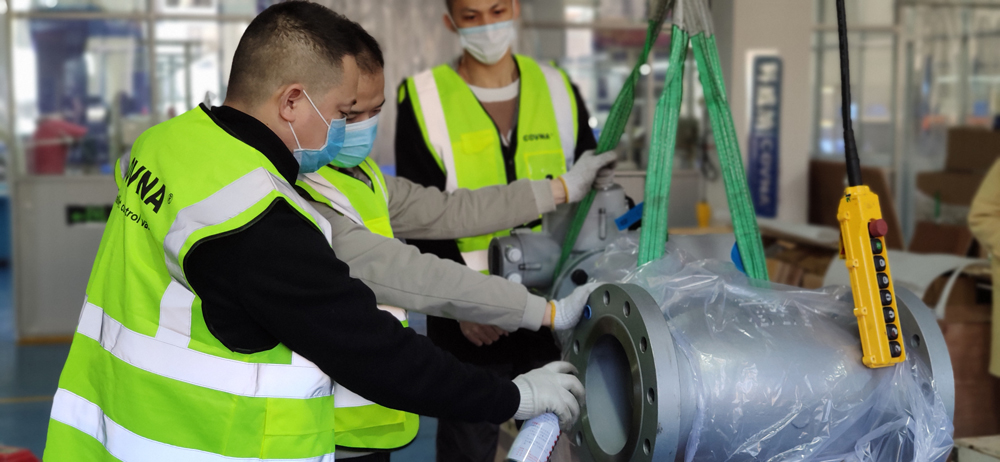The electric control valve is a relatively common and relatively important instrumentation device in industrial automation process control. With the improvement of the degree of automation in the industrial field, it is being more and more widely used in various industrial production fields. Compared with the traditional pneumatic control valve, the electric control valve has obvious advantages such as energy saving, environmental protection, quick and convenient installation, etc. According to the structural classification, electric control valves can be divided into electric single-seat control valves, electric double-seat control valves, electric sleeve control valves, and electric three-way control valves.
This article focuses on the main characteristics of the electric three-way control valve commonly used in environmental protection equipment
The electric three-way control valve is usually used to regulate the two media in the heat exchanger, and the proportional adjustment is simple. It is available in single-seat and double-seat control valves, not both. Save installation pipes, reduce investment, and take up less space. Therefore, the electric three-way control regulating valve is widely used in electric power, the chemical industry, metallurgy, petroleum, light industry, environmental protection, and other industries.
The electric three-way regulating valve is suitable for environmental protection equipment. It has the following characteristics:
- The fluid direction acting on the valve core is in the open state, and the working stability is good.
- In addition to the bush guide on the valve cover, the side of the valve core and the inner surface of the valve seat also have a guide function, with a large guide area and reliable operation.
- The servo amplifier adopts deep dynamic negative feedback, which improves the adjustment accuracy.
- There are many types of electric manipulators, which can be used for 4-20mADC or 1-5VDC.
- The electronic control valve directly controls the opening of the valve through the current signal, without a servo amplifier.
- Save automation investment. Compared with single-seat, double-seat, or sleeve control valves, one valve can be saved in the same system, which simplifies the system and saves investment.
- The bellows seal forms a complete seal on the moving valve stem to prevent liquid leakage.
- The three-way control valve is divided into two types: diverter valve and confluence valve. Media is transported and aggregated. The selection is determined according to the working conditions on-site.

General
- Main content: This inspection and maintenance operation instruction specify the safety matters and specific technical requirements and implementation steps for daily maintenance, troubleshooting and replacement of pneumatic control valves used online. Other types of control valves can also be used as a reference.
- Basic composition: The pneumatic regulating valve is composed of two parts: a pneumatic diaphragm actuator and a valve body. The actuator is composed of upper and lower membrane covers, corrugated films, trays, brackets, push rods, springs, adjustment parts, and other parts; the valve body part is composed of a valve body, valve core, valve seat, valve stem, flange and so on.
- The working principle of the pneumatic control valve: When the signal pressure is input into the membrane air chamber, a thrust is generated on the corrugated diaphragm to move the push rod and compress the spring until it is balanced with the reaction force of the spring. The movement of the push rod is the pneumatic pressure. Executor travel. The action mode of the pneumatic film actuator is divided into positive action and reverse action; direct action: when the signal pressure is high, the push rod part moves downward; reverse action: when the signal pressure is high, the push rod part moves upward.
- Regulating valve classification: According to the structure, it can be divided into a straight single-seat valve, straight double-seat valve, angle valve, three-way valve, diaphragm valve, and butterfly valve.
- Scope of application: This maintenance operation instruction is applicable to all instrument personnel in the instrument section of the electrical instrument workshop.
- Purpose of maintenance: In order to make the control valve work well, without internal leakage or stagnation, the switching action is flexible and free; there is no leakage at each connection so that the control valve can effectively adjust and control the pipeline at various switch positions And the medium in the equipment, play the role of stable production.


PDF Get-a-Product Catalogue